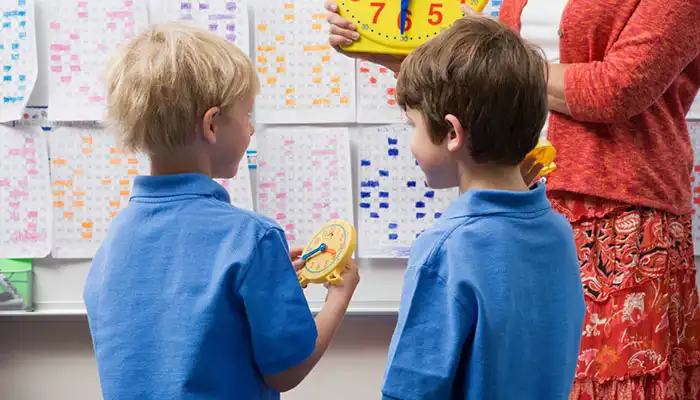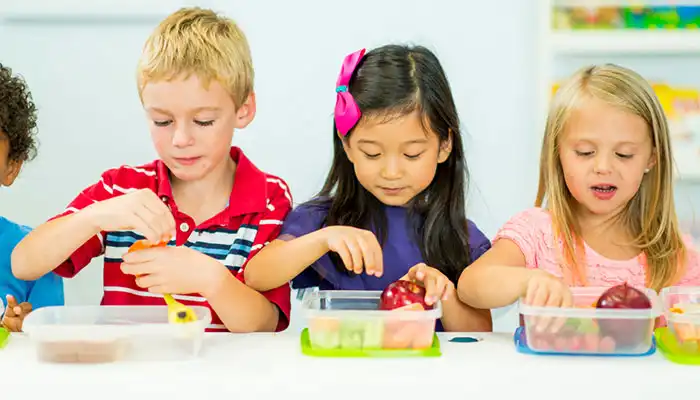Kindergarten-Friendly Time Telling Activities Printable
Do you know how to teach time to children between the ages of five and eight, for a kindergarten? Using functions Kindergarten time telling activities printable resources to explain reading the clock is a challenge. However, with the right tools, telling time to children from five to eight can be more exciting.
Why Time-Telling Is Important for Kindergarteners
I hate to be harsh, but at some point kids have to learn to tell time. Whether it’s 10 minutes until snacktime or 15 minutes before kickball, time-telling is a straight-up survival skill. Kindergarten time telling activities are activities that will make sure your child learns the ropes. Because five-year-olds don’t need you to hand them an analogue clock and say, ‘OK. Watch this, and go.’ These kids need to figure out how to tell time in ways that are fun and easy. If you have a pre-K child, they will be learning some basic time-telling skills at school, too. So moments of home learning becomes a great opportunity to reinforce it.
Early Math Skills and Time-Telling
Time-telling offers a gateway to math, so expect Kindergarten time telling activities to involve basic math skills, too, like counting, learning to sequence numbers, and recognising patterns – all of which is embedded when you teach a child that there are six 10s in every 60 minutes. It’s like slipping broccoli into a cheese omelette: your child doesn’t notice they’re eating their vegetables.

Establishing Routines Through Time-Telling
Time-telling is also instrumental for establishing routines for another reason. Your child might already know that bedtime is at 8 PM. This information can be reinforced through Kindergarten time telling activities so that your child begins to grasp what 8 PM looks like on a clock. In conjunction with a general awareness of the day’s schedule, your child is now prepared for that 8 PM bedtime and successful transitions throughout the day (fewer tantrums!). When your child becomes adept at time-telling, it can actually strengthen their sense of agency or ‘sense of self’.
Types of Kindergarten-Friendly Time-Telling Activities
As for the resources, you have lots of options to choose from. You can use analogue clocks, digital clocks, digital time-telling activities and more, depending on how you want to present the information. Let’s take a look at the types of activities you can use to teach your learner how to tell the time.
Analog Clock Activities
Analogue clocks might be outdated, but they are key to understanding the concept of time Kindergarten time telling activities using analogue clocks aids in the development of the relationship between the hour and minute hands. For starters, build a foundation, showing the kids the hour hand, then the minute hand, and, finally, how they relate to one another. Free printable clock faces will come in handy here. The children can colour the 12-hours-cheeseclock, move the hands and even cut them out and paste them into their own clocks.
Here’s the secret, use stories: ‘Big Hand is Daddy Hand and shows the minutes and little hand is Baby Hand and shows the hours’.
Digital Clock Activities
Of course, with smartphones and digital everything having entered little lives, they should also know digital time. Kindergarten time telling activities should be digital too. First, show them how to tell the time in a digital format: you read the left-hand numbers as the hours, and you read the right-hand numbers as the minutes. Once that’s down, you can move to the AM and PM business, making sure they understand the difference between morning and evening times.
A good skill-builder is a worksheet with analog clocks and their digital times, where kids have to match analogue clock faces to their digital counterparts. You can download any of hundreds for free.
Interactive Time Games
Let’s face it. If kids are learning but also having fun at the same time, they’re more likely to retain it. Interactive time games are a great way to review and reinforce skills in ways that don’t even feel like you’re studying at all. Matching games to homophone pictures is a fun way to build this skill, as is an interactive game where kids have to ‘set the time’ on a clock depending on the situation.
Another game in vogue is ‘What Time Is It, Mr Wolf?’ Children find it easy to play, having just to call out the time, and to go a few steps if it’s quarter past the hour, a few more if it’s five to, and so forth. This helps not only with the actual telling of time, but with listening and giving instructions.
Story-Based Time Exercises
including time in storytelling is another great way to teach kids about time. Come up with a story where a character is having a day, and your child has to figure out the time at different parts of their story. For instance, ‘It’s 7am. The sun is just coming up. What should our character do next?’ Then you can ask your child to draw that time on a clock or tap on a digital clock to find the correct time.
Stories bring it alive: children see what time-telling looks like in real life. They’ll remember what Mary is asking much, much easier than a worksheet will.
Printable Resources for Time-Telling
Finally, your printable worksheets. Awww, bless! Thank goodness for printables: all the structure of an activity, but all the freedom of self-led learning or teacher-led learning. Looking for kindergarten-friendly time-telling activity ideas? Printables are the answer.
Worksheets
Worksheets for any classroom subject will likely contain a word worksheet for time-telling. These worksheets start small (What is this called? The hour.), and then get more complicated (What is 1 hour after/before that time?:, such as 2 am). And, they come with lots of cute illustrations: animals, more animals, and your kids’ favourite cartoon characters.
It is advisable to begin with worksheets that concentrate on one concept at a time. This includes completing sheets with only an analog clock and a question asking them to draw the hour hand, then adding worksheets with an analog clock and question adding the minute hand, and finally digital clocks.

Clock Cut-Outs
Cut-outs of clocks are another terrific resource. These are printable clock faces that kids can cut out and use to work on telling different times. You can use the printable versions that have movable hour and minute hands to let kids manipulate the clock themselves to see how the two hands move together.
Cut-outs of clocks can also be used to good effect when telling stories or recounting the day’s activities. ‘Set the clock to when you get up in the morning!’ ‘Set the clock to when you eat dinner!
Time Matching Games
Time-matching games – frequently placing an analog clock beside a time in digital format, or engaging in matching, such as 12 PM with lunchtime – provide interactive feedback to what children have already learnt with the sheets and the cut-outs.
With a little bit of time, these games are easy to print at home on your personal computer and then play on demand, and at the ready-to-play level online, with packs provided for both one-on-one learning at home; and group settings at two, three, four or more students at school.
Integrating Time-Telling Into Daily Routines
One of the best ways to teach time is to include it in your day. For instance, instead of using a digital clock, print out a daily schedule that has times listed next to each activity. Your child will become more conscious of time as she watches it pass and follows along on her schedule.
A second is to create a ‘Time Corner’ in your home or classroom filled with a wall clock, a schedule and a few time-telling activities. Prompt your child to check the time before you begin a new activity or before he moves onto something else in his day. The more he practises, the more confident he will become.
Making Time-Telling Fun and Engaging
Learning should also be fun – and that’s why yours truly has prepared a whole bunch of kindergarten-appropriate time-telling activities to make up for fun and memorable learning experience. With our worksheets, games, and real-life practice activities, your child will not only learn how to tell time but will also enjoy doing so. If you’re at home helping your kiddo with learning how to tell time, this list of activities is a real treasure – and it’ll come in handy whether you’re at home, in a classroom, or anywhere else.
And remember that learning to read time starts out as playful fun-filled activities that boost confidence and understanding. The right recipe will ensure success in your child learning to read clocks before you know it.
Printable time-telling activities are the answer to teaching kindergarten-friendly time concepts to little ones. These resources are conducive for beaming learning fun.
Kindergarten-Friendly Time Telling Activities Printable
If you are teaching kindergarteners how to tell time, it is important to keep them engaged through fun and friendly kindergarten time telling activities printable materials. In the beginning part of our article, we discussed the importance of why kindergarteners need to learn how to tell time, what resources are available of these kinds of activities, and how you can provide information on clock reading to your kids. Here, let’s go deeper into how to regularly introduce time-telling to your kid every day without the pressure that may disrupt their learning progress. We also added frequently asked questions about beginning readers and how you can support them in learning how to tell time.
FAQs About Time-Telling for Kindergarteners
- How Do I Start Teaching My Child to Tell Time?
If you are starting from scratch, begin at home and introduce an analogue clock, explaining what the two ‘hands’ indicate: the hour hand, and the minute hand. There are many printable worksheets available to help you teach your child how to tell the time, starting with hours first and then introducing minutes. Take it one step at a time, don’t overwhelm your child and mastery takes time, so relax. Every child is at a different developmental level, after all.
- What’s the Best Age to Start Teaching Time-Telling?
Normally, most children are ready to start learning to tell time between the ages of five and six years old. But this is an approximation, and it all depends on the child and their development. Some kids could be ready earlier on, especially if they are interested in clocks and are curious about time. Kindergarten-friendly time telling activities are designed to be accessible for kindergarten kids, so they are a natural choice at this age.
- Should I Teach Analog or Digital Clocks First?
When teaching time telling, it’s helpful to begin with analog clocks. Hours and minutes are easier to grasp made visual. Kindergarten time telling worksheets packs typically include both kinds. Once your child gets the hang of analog time telling, you can use digital clocks for the dual purpose of helping your child see time in two formats.
- How Can I Make Time-Telling Fun?
The key is to make the learning of telling time feel like play. Have them perform story based exercises where they have to find out what time certain events take place. Make it part of your every day life by having them tell you what time it is before you start a particular activity. And did we mention that Kindergarten-friendly time telling activities printable games are available so your kids can have fun learning to read a clock?
- What Are Common Mistakes to Avoid?
Mistake number one: burying your kid under too much information at once. First the hour, then the minute, then … pliers? No. Keep things simple. Cover the hour hand first, then the minute – then the pliers. Mistake number two: not practising frequently enough. Consistency is the key here, so try to work time-telling into your day-to-day activities. Mistake number three: roping time-telling into anything else. Make time-telling something that’s fun, light and no-pressure.
Integrating Time-Telling Into Daily Life
Using Daily Schedules
The best way to reinforce it is by incorporating telling time into their daily routines: a printable daily schedule, listing what they should do each hour of the day, tons of activities and even specific times, such as snack time at 10 am, will get children accustomed to the link between telling time and their tracts.
Post the schedule someplace your child can see it (such as on the fridge or in an area where your child plays) and every morning, have your child sit down with you and go over the day’s activities, with your child telling you the time for each item. Not only will this boost your child’s ability to handle telling time, but it might also contribute to a sense of control in daily life.
Creating a Time-Telling Corner
Create a Time-Telling Corner in your house or classroom that will serve as a dedicated space for your child to learn about times of the day. In the TT Corner, you can place a wall clock, a digital clock and some printable time-telling activities compatible for kindergarten. Encourage your kid to spend some time there every time they want to check what time it is or practise stating the time.
This corner might include flashcards and matching games and, as your child grows, a calendar. If you allow time-telling to become part of your child’s surroundings, they’ll gradually become more comfortable with it as a whole.
Setting Time Challenges
Children love a challenge and you can take advantage of that when you teach time-telling. You can use little ‘time challenges’ throughout the day. ‘In five minutes, we are going to start reading a story. What time will it be five minutes from now?’ That way they will practise how to figure out how many minutes from the start time, and they’ll get lots of practice with the position of the minute hand.
Incorporating Time-Telling Into Games
Games – whether board games, interactive games such as ‘What Time Is It, Mr. Wolf?’, or ‘Time Bingo’, or just good-old make-your-own printed versions derive from kindergarten-style time telling activities printable worksheets, are perfect for sneaking in some time-telling practice. Or make up your own – you could do a ‘match the time to the activity’ game, for instance, have 8 PM to ‘bedtime’, 4 PM to ‘teatime’, etc.
What games like this can do, in addition to the vertical relationship advanced by an adult at a desk, is make time-telling a social activity, and a fun one. Moreover, they give you the chance to play with your child, which is always wonderful, and to bring her in at the same time as you shore up the pillar of her humanity.
Expanding Beyond Time-Telling: Building Related Skills
10 Kindergarten Time Telling Activities to Master the Clock
You might think that telling time is all about clocks. But when you glance at a time telling activities for kindergarten printable resource, time is also about numbers. Kids need to have some number sense to learn to tell time. Number sense is the idea that a number represents a quantity, which can in turn be added to, subtracted from, or compared with other quantities.
For example, when they learn that an hour has 60 minutes, they are learning to count and to start to learn about fractions (half past the hour, for instance). These fundamentals are crucial when they go on the more challenging maths at school.
Enhancing Fine Motor Skills
As they fiddle with the hands of an analogue clock, or write out the time on a worksheet, they are also practising their fine-motor skills (such as cutting out the clock faces or drawing on the hands of the clock). Fine-motor skills are required to write, button up clothes and perform other daily tasks.
Strengthening Memory and Sequencing
Memory and sequencing are both key elements in telling time – often kindergarten-appropriate time worksheets involve asking children to recall what time or times different activities occur, and sequence them accordingly. ‘What time does breakfast start? What time does school begin?’ If a child remembers the times and sequences what happens when, she is fundamentally learning how time unfolds, even if she can’t yet express it in words.
You can practise these skills by asking your child what was the first thing that happened, then what was next, and last when reviewing what happened during the day at bedtime. This isn’t just good for telling time but for narrative skills and cause and effect.
Building Independence and Responsibility
This can help children become more independent, telling time independently, and prepared with a roughly correct sense of timing which is necessary for participating in a system of schedules designed to make everyone work together on the same page (or screen). Kindergarten time telling activities printable resources point your child in the direction of becoming increasingly independent as he or she becomes comfortable with telling time.
Empower him to take on tasks such as setting the timer for playtime or letting you know when it’s time to go. Time management is key, and your child will feel super confident if he can keep track of things – and you will too!
Advanced Time-Telling Concepts for Kindergarteners
When your child has the basic skills down, you can move to the next level. Printable time activities for kindergarten will frequently include things like exercises in half-past, quarter-to, and even how to read a 24-hour clock, all of which are designed for kids at this level and will have them ready to tackle more formal time telling down the line.
Understanding Half-Past and Quarter-To
For a start, explain half-past the hour: when the minute hand has gone half way round the clock, it is pointed at the 6, so we say half-past the hour. Use a rampant-hours clock face with movable hands, so the child can symbolically replicate the indication. After they have grasped how to say half-past the hour, you can move on to quarter-to, which is the indication when the minute-hand points at the 9, so that only a quarter-of-an-hour is left to go.
Exploring the 24-Hour Clock
If your child is up for a challenge, now would be a great time to introduce the 24 hour clock – particularly if your home uses a digital clock that displays time as 17:03. Explain how the 12 hours of the day continue to ‘count up’ past noon, and how a 24-hour clock is actually just an alternative (but equivalent) way to represent ‘12:03’. Kindergarten-friendly printable time-telling activities that utilise both 12-hour and 24-hour formats can also help here.
Introducing Time Zones
If you want a ‘time zone’ craft lesson, explain that some places are on one time of day while another place is on a different time because of how the Earth spins. You can also make a matching game of cities and times for your child to practice telling time and expand their world view.
Conclusion: Mastering Time-Telling One Activity at a Time
Kindergarten Clocks and Time Activities Printable for Kids offer a range of activities suitable for kindergarteners that can be used at home or in the classroom. Investing some time in teaching your kids how to tell time will help them develop their confidence and ability to read time from a clock. Remember; learning takes time, work, and practice in small steps, so keep your expectations realistic and encourage their development. With the right resources, selection of activities and your dedication, your child will be clock-reading wizard in no time.
And remember: it’s the journey that counts, after all. Tell-the-time is just one small part of learning. The concentration, visualisation, math and memory skills that they hone while practising this art will come in handy in many other contexts. With patience, playfulness, and persistence, they will be reading the clock in no time.
These kindergarten-friendly time telling activities printable resources might just unlock the door to a lifelong understanding of time.



